Do I need stakes for planting in new woodlands? If so, what sort of stakes are best?
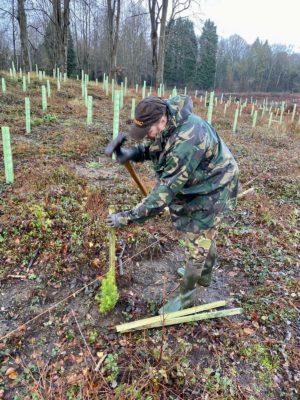
A recent article in the New Scientist suggests that staking newly planted trees may be pointless for trees that are planted in gardens and parks. James Wong argues that stakes are often not needed because trees have a natural tendency to grow straight and vertical. Indeed, staking may cause damage because the tie that connects the post and the tree can cut into the tree. Also the tie-up to the stake creates a weak point where a sapling can snap in high winds. Even if it doesn’t snap, it develops an unnaturally thick trunk at that point to stop it from breaking. Despite this, you might still want to use a stake in a garden or park for reasons unrelated to the growth of the tree - to avoid it being run over by a lawn mower or accidentally walked into.
For forestry planting, using stakes is a very different matter. Stakes are easy to spot and help forestry contractors to find their new trees for weeding and for “beating up” - the odd phrase used by foresters to refer to replanting where trees have died. Using stakes can also help make the trees grow straight which is important for producing top-quality timber. However, the most important function of tree stakes in most new woodland planting is to keep tree guards vertical and securely in position.
Most stakes for tree planting use treated softwood and are sawn, but there is a case for using longer-lasting sweet chestnut pales made by splitting. Such stakes are readily and cheaply available from suppliers in East Sussex and Kent. These stakes are strong and easier to bang into hard, stony ground. As well as being long-lasting, sweet chestnut does not need treating so for those using biodegradable tree guards and wanting to “leave no trace”, these may be the best stakes for new planting. Using untreated stakes like this avoids putting extra chemicals into the environment.
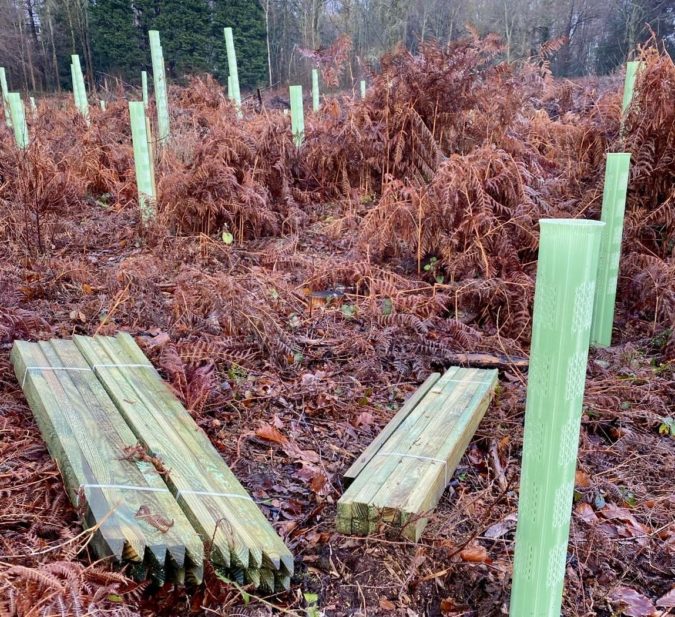
Another option, often used for new planting of hedgerow trees, is using bamboo canes to hold the saplings and their guards, usually very light spiral guards. Canes as stakes have the added advantage that they are light and easy to transport: when you are planting any new trees there is lots of material to move around the site - guards, young trees, stakes and spades.
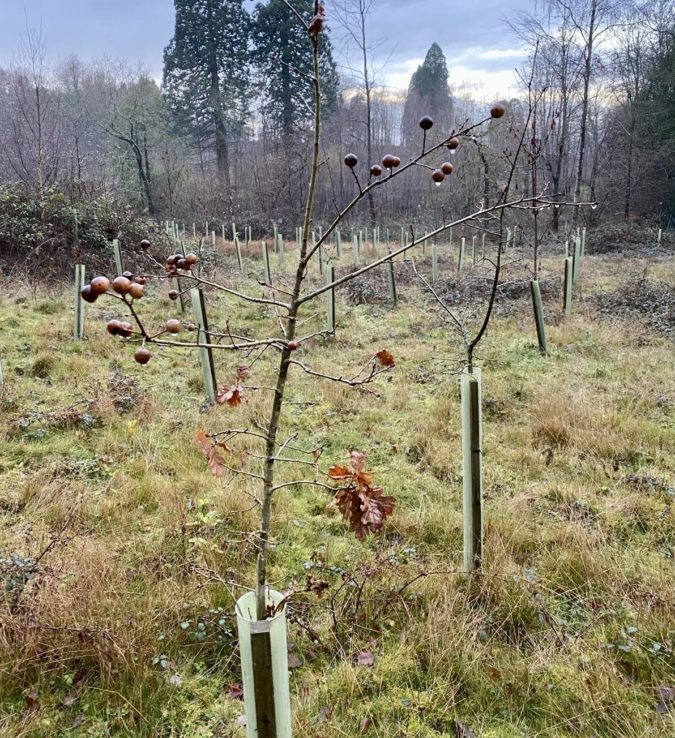
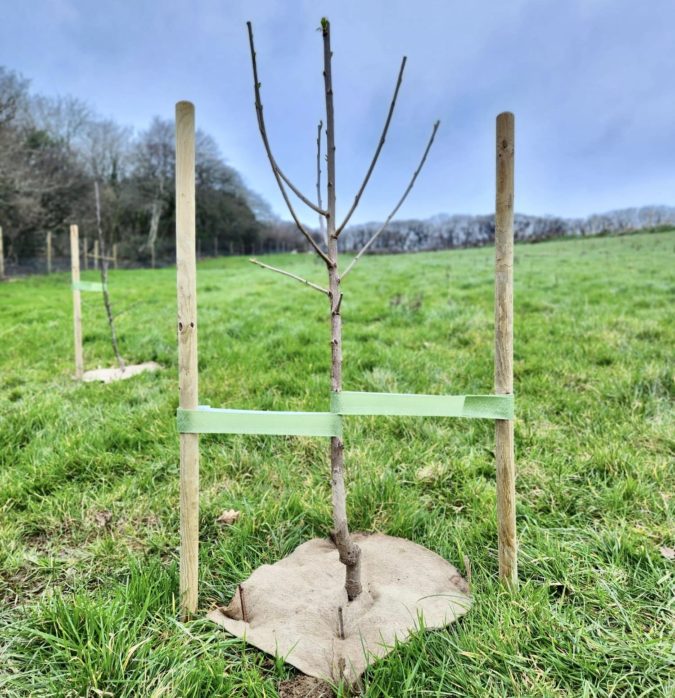
getting ready for some serious planting
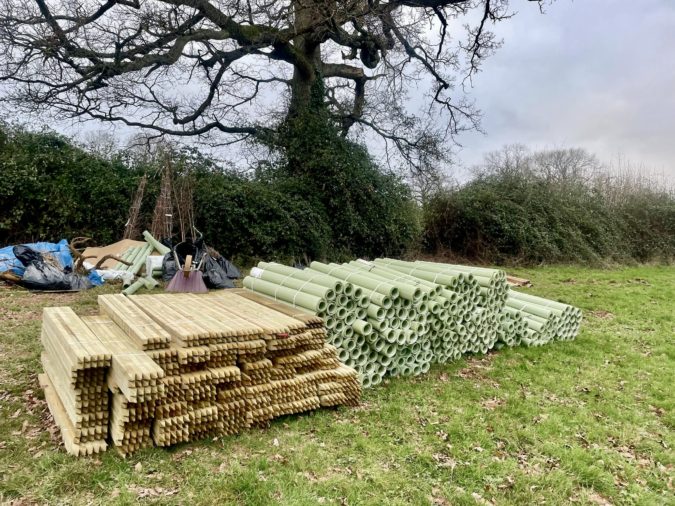
Comments are closed for this post.

Deer are our main problem. They even push over stakes. We need to adopt a belt and braces approach using a stake or cane, a tree guard and about a metre of brash at least 30cn high.
P. Bennetts
10 February, 2024